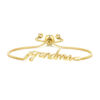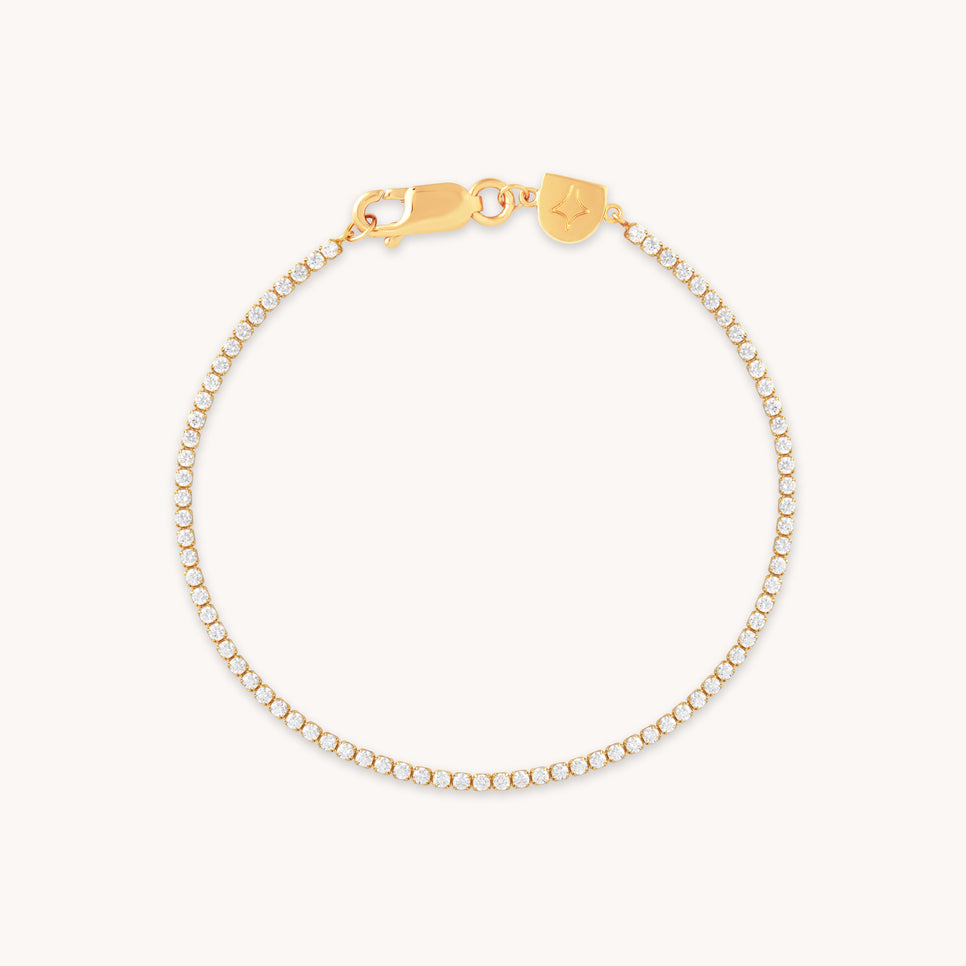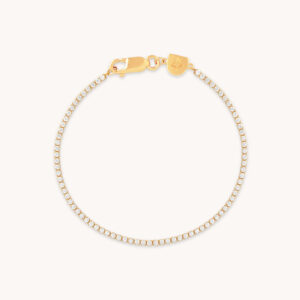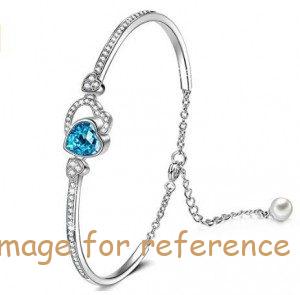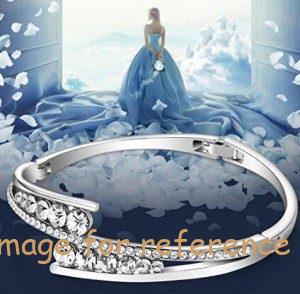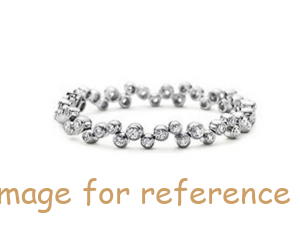Özel Bir Mücevher Fabrikasının Altın Tenis Zinciri Bileziği için OEM Sürecinin İçinde
OEM/ODM Takı Üreticisi Kendi Mücevherlerinizi Özel Tasarlayın
Başlayalım : mo@kingjy.com
The Alchemy of Precision: Özel Bir Mücevher Fabrikasının Altın Tenis Zinciri Bileziği için OEM Sürecinin İçinde
İnce mücevher dünyasında, few pieces capture the essence of timeless elegance and modern brilliance quite like the tennis chain bracelet. Characterized by a continuous line of uniformly set, individually gleaming stones held in place by a minimal metal framework, it is a masterpiece of symmetry, light, ve yapısal bütünlük. Bir marka için, perakendeci, or private client looking to create their own version of this classic, the journey unfolds within the specialized realm of a custom jewelry factory operating on an OEM (Orijinal Ekipman Üreticisi) temel.
This process is a symphony of art, bilim, and meticulous engineering. An OEM partnership means the factory does not simply sell a pre-existing product; it brings a client’s unique vision to life, handling every step from initial concept to final, professionally packaged piece. Bu makale kapsamlı bir bilgi sağlayacaktır, step-by-step exploration of the OEM process for creating a bespoke gold tennis chain bracelet, demystifying the transformation of a creative idea into a wearable heirloom.
Faz 1: Conception and Design Engineering
This initial phase is the foundation upon which the entire project is built. It is a collaborative dance between the client’s aspirations and the factory’s technical expertise.
Adım 1: The Client Brief and Creative Consultation
The process begins with a dialogue. The client—whether an established jewelry brand, a startup, or an individual—approaches the factory with a vision. This can range from a vague idea (“a classic, but chunky, tennis bracelet”) to highly detailed specifications including sketches, CAD renders, or even an inspiration board.
Key discussion points include:
-
Metal Seçimi: The choice of gold is paramount.
-
Saflık: 10K, 14K, 18K, or even 22K gold. Higher karat means a higher percentage of pure gold, resulting in a richer color but a softer material. 14K and 18K are the most popular for tennis bracelets as they offer a perfect balance of beauty, dayanıklılık, ve değer.
-
Renk: Sarı altın, beyaz altın, veya gül altın. White gold is typically rhodium-plated for a bright, silvery finish, which may require re-plating over time.
-
-
Stone Specifications: The soul of the tennis bracelet.
-
Tip: While traditionally set with diamonds (Natural or Lab-Grown), modern interpretations use sapphires, moissanite, or other gemstones. For this example, we will focus on diamonds.
-
Size and Carat Weight: The diameter of the stones, measured in millimeters (Örn., 2.5mm, 3.0mm, 4.0mm), directly influences the bracelet’s width, ışıltı, and overall carat weight. A 3.0mm stone size is a very popular choice.
-
Kalite: . “4 CS” for diamonds are defined: Kesmek (typically brilliant round for maximum sparkle), Renk (Örn., G-H for near-colorless), Açıklık (Örn., VS-SI for eye-clean stones), and Carat (the total weight of all stones combined).
-
-
Bracelet Dimensions:
-
Uzunluk: Standard women’s lengths are 7 inç, but custom sizes are common.
-
Width/Profile: Determined by the stone size and the metal links. A 3.0mm stone bracelet will have a width of approximately 3.0mm.
-
-
Kenetleme Türü: A critical functional and aesthetic component. Options include a spring-ring clasp, a fold-over clasp with safety latch, or a more decorative box clasp, often personalized with a logo.
-
Budget and Quantity: The factory needs to understand the target price point and the production volume (Örn., a one-off piece, a small batch of 50, or a large order of 1000+ birimler).
Adım 2: Technical Design and CAD Modeling
Once the brief is finalized, the factory’s design engineers translate the artistic vision into a precise technical blueprint using Computer-Aided Design (CAD) yazılım.
Bu aşama nerede “unseen” magic happens:
-
Boyutsal doğruluk: The CAD model ensures every component is measured to the micron. The diameter of each diamond seat, the thickness of the gold links, and the tolerances for the clasp mechanism are all digitally defined.
-
Yapısal bütünlük: The engineer designs the links and the setting style to ensure the bracelet is durable. A tennis chain’s strength lies in its interconnectedness; the CAD model simulates stress points to prevent failure.
-
Görselleştirme: The client receives photorealistic 3D renders of the bracelet, often in different gold colors. This is the client’s first true look at their creation before any metal is poured. Revisions are made at this stage—adjusting proportions, modifying the clasp design, or fine-tuning the aesthetics. This digital prototype is crucial for avoiding costly mistakes later.
Adım 3: Quotation and Contract Finalization
Sonlandırılmış CAD modeliyle, the factory’s costing department can generate a precise quotation. This quote breaks down the costs:
-
Gold Cost: Calculated based on the exact weight of gold required (calculated from the CAD model’s volume), the current market price of gold, and the manufacturing wastage (a crucial factor).
-
Stone Cost: Based on the quoted price per carat for the specified diamond quality and the total carat weight needed.
-
İşçilik Maliyetleri: Encompassing modeling, döküm, ayar, parlatma, ve bitirme.
-
Takım Maliyetleri: Mümkünse, for custom molds or stamping dies.
-
Unit Price and Total Order Value.
Upon client approval, a formal purchase order and manufacturing agreement are signed, locking in the specifications, fiyatlandırma, zaman çizelgesi, and terms of the partnership.
Faz 2: Pre-Production and Prototyping
Before full-scale production commences, a single prototype is often created to validate the design in a physical form.
Adım 4: Prototip oluşturma (The First Sample)
There are two primary methods for creating the prototype:
-
3D baskı (Stereolitmikromografi): Onaylanan CAD dosyası yüksek çözünürlüklü 3D yazıcıya gönderilir, which builds the bracelet model layer-by-layer using a UV-sensitive resin. This resin model is incredibly detailed and accurate.
-
Hand Fabrication by a Master Jeweler: For exceptionally complex or unique designs, a skilled jeweler may hand-carve the bracelet from a block of wax or even fabricate it directly in metal, using traditional tools and techniques.
Bu prototip, olarak bilinen “first sample” veya “altın örneği,” is then used to create a mold for casting, or in the case of a 3D print, it proceeds directly to the next step.
Adım 5: Client Approval of the Sample
The physical sample is shipped to the client for a thorough inspection. The client assesses the design, oranlar, ağırlık, ve genel his. This is the final checkpoint for any adjustments. If approved, the factory is cleared to begin mass production. If minor changes are needed, the CAD model is updated, and a new sample is created.
Faz 3: Üretme – The Heart of the Factory
This is where raw materials are transformed into a finished piece of jewelry. The process for a tennis bracelet is particularly intricate due to its linked construction.
Adım 6: Mold Making and Casting the Gold Links
-
Tree Building: Dozens of identical bracelet link patterns, either 3D-printed in wax or injected into a rubber mold, are attached to a central wax column called a “ağaç.” A single tree can hold the components for many bracelets, making the casting process efficient.
-
Yatırım: Ağaç çelik bir şişenin içine yerleştirilir ve “yatırım.” The investment hardens into a solid block, capturing every minute detail of the wax patterns inside.
-
Tükenmişlik: Şişe bir fırına yerleştirilir ve yüksek sıcaklığa ısıtılır.. This process melts away the wax (hence “Kayıp-Ağlama Dökümü”), leaving behind perfect, hollow cavities in the hardened investment.
-
Döküm: Şişe, now containing the empty cavities, döküm makinesine aktarılır. Crucibles of the chosen gold alloy are melted using a high-frequency induction furnace or, in more advanced factories, a vacuum casting machine. The molten gold is then forced into the flask by centrifugal force or vacuum pressure, filling every cavity.
-
Sapma ve kesme: Once the gold has cooled and solidified, the investment block is quenched in water, causing it to break away and reveal the “gold tree.” The individual gold links are then carefully cut from the central sprue.
Adım 7: The Chain-Making Process
This is a defining stage for the tennis bracelet. Unlike a solid bangle, its flexibility and comfort come from its linked structure.
-
Tumbling and Initial Finishing: Çiğ, cast links are often placed in a “tumbling machine” with steel shot and a cleaning solution. Bu süreç, saatlerce sürebilen, work-hardens the gold, removes surface imperfections from casting, and begins to smooth and polish the metal.
-
Linking and Assembly: Highly skilled chain assemblers, using precision tools like tweezers and micro-pliers, meticulously link the individual components together. Tenis bilekliği için, this involves connecting each diamond-bearing link to its neighbors in a precise, alternating pattern that ensures perfect alignment and fluid movement. This is a painstaking, manual process that requires a keen eye for detail.
-
Soldering the Clasp: The assembled chain is fitted with the custom-designed clasp. The clasp components are carefully aligned and then permanently attached using a process called soldering. A jeweler uses a torch to melt a small piece of solder (a lower-melting-point gold alloy) at the joint, fusing the clasp to the chain without melting the main components. This requires immense skill to avoid damaging the delicate links.
Adım 8: Taş ayarı
The setting process is what gives the tennis bracelet its iconic continuous sparkle. The chosen method is the “shared prong” veya “invisible” ayar, where each stone is held by four prongs, and each prong is shared between two adjacent stones.
-
Prepping the Settings: A setter first uses a handheld graver to clean up each “koltuk” veya “bearing” where the diamond will sit, ensuring it is perfectly shaped and free of any casting debris.
-
Setting the Stones: Using a microscope for unparalleled precision, the setter begins the delicate task of placing each diamond. One by one, stones are laid into their seats. Daha sonra, using a specialized setting tool, the setter carefully pushes the tiny gold prongs over the girdle (the widest part) of each diamond, securing it firmly in place.
-
Kalite Kontrolü: The setter constantly checks for security and alignment. Every stone must be tight against movement, and the entire row must be perfectly straight. A single misaligned stone can disrupt the entire visual flow of the bracelet. This is one of the most critical and skill-intensive stages in the entire process.
Adım 9: Bitirme ve parlatma
The bracelet is now fully assembled and set, but it lacks the final luster. The finishing process brings out its brilliance.
-
Ön kutlama: The bracelet may undergo another round of tumbling or be worked on with motorized brushes and polishing compounds to smooth out all surfaces, remove any tool marks from setting, and begin to shine the metal.
-
El parlatma: A polisher uses a flexible shaft machine (A “Foredom” tool) with various wheels, brushes, and polishing compounds (isminde “rouge”) of different grits. They meticulously polish every visible surface of every link and prong, taking care not to apply excessive pressure that could loosen a stone. This stage requires an intimate knowledge of the piece’s geometry to reach every nook and cranny.
-
Rodyum kaplama (Beyaz Altın için): If the bracelet is white gold, it now undergoes an electroplating process. It is submerged in a rhodium solution, and an electric current is passed through it, depositing a thin, parlak, beyaz, and highly reflective layer of rhodium over the entire piece. This enhances the whiteness and provides a protective, scratch-resistant coating.
-
Ultrasonic Cleaning and Steam Blowing: The finished bracelet is placed in an ultrasonic cleaner, where high-frequency sound waves in a special solution agitate away every last speck of polishing compound, toz, and oil. It is then rinsed and given a final blast of steam from a steam cleaner, which removes any remaining moisture and leaves the diamonds and metal sparkling immaculately.
Faz 4: Quality Assurance and Finalization
A reputable OEM factory has a multi-layered QC process that is as rigorous as the production itself.
Adım 10: Titiz kalite kontrolü
The bracelet is inspected by a dedicated QC team, often separate from the production floor. They use a checklist:
-
Metal Integrity: Checking for any casting pits, çatlaklar, or weak solder joints.
-
Taş Güvenliği: Using a sharp probe, they test every single prong to ensure no stones are loose. They also check under a microscope for any damage to the stones incurred during setting.
-
Stone Quality Verification: Ensuring the diamonds match the specified color, açıklık, and cut as per the initial agreement.
-
Toka işlevi: Testing the clasp mechanism hundreds of times to ensure it opens and closes smoothly and securely.
-
Finish and Polish: Inspecting for a flawless, mirror-like polish with no visible scratches or tool marks.
-
Boyutlar ve Ağırlık: Verifying the final length, Genişlik, and total gold weight against the specifications.
Any piece failing any part of this inspection is sent back to the relevant department for rework.
Adım 11: Hallmarking and Laser Engraving
To guarantee authenticity and provenance, the bracelet is marked.
-
Ayıplama: This involves laser-engraving tiny symbols onto the clasp or an inner link. Standard hallmarks include:
-
Karat Mark: Örn., “14K,” “18K.”
-
Manufacturer’s Mark/Trademark: The factory’s or client’s registered logo.
-
Assay Mark (gerekirse): An independent verification of metal purity.
-
-
Custom Engraving: If the client requested personalization (Örn., a signature, a special message, or a serial number), it is done at this stage with a high-precision laser engraver.
Adım 12: Final Presentation and Packaging
The approved bracelet is given one last ultrasonic clean and steam to ensure it is in pristine condition. It is then carefully placed in its presentation packaging—a branded box, kadife bir kese, or a custom-designed case as specified by the client. An authentication card or certificate, detailing the gold karat and diamond specifications, is included.
Faz 5: Delivery and Post-Production Support
Adım 13: Secure Shipping and Logistics
The factory’s logistics team prepares the shipment, creating a detailed packing list and invoice. High-value orders are typically shipped via insured, tracked courier services (like DHL or FedEx) with all necessary customs documentation. The client is provided with tracking information, and the factory ensures a smooth handover.
Adım 14: Satış Sonrası Hizmet
A professional OEM relationship does not end at delivery. Reputable factories offer after-sales support, which may include warranty against manufacturing defects, assistance with repairs (Örn., re-tipping worn prongs years later), or support for future orders.
Çözüm: The Synthesis of Vision and Craftsmanship
The journey of a custom gold tennis chain bracelet through an OEM jewelry factory is a profound testament to human ingenuity. It is a process that blends centuries-old goldsmithing techniques with cutting-edge digital technology. From the initial spark of an idea in a client’s mind to the final, gleaming object that adorns a wrist, each step is governed by precision, tutku, ve kaliteye sarsılmaz bir bağlılık.
For the client, understanding this intricate process is empowering. It reveals the true value behind the piece—not just in the weight of the gold or the sparkle of the diamonds, but in the hundreds of hours of skilled labor, the layers of quality control, and the collaborative spirit that brings a unique vision to life. The resulting tennis bracelet is more than just an accessory; it is a wearable narrative of design, mühendislik, and artisanal excellence, a timeless piece forged through a remarkable partnership between creator and maker.

